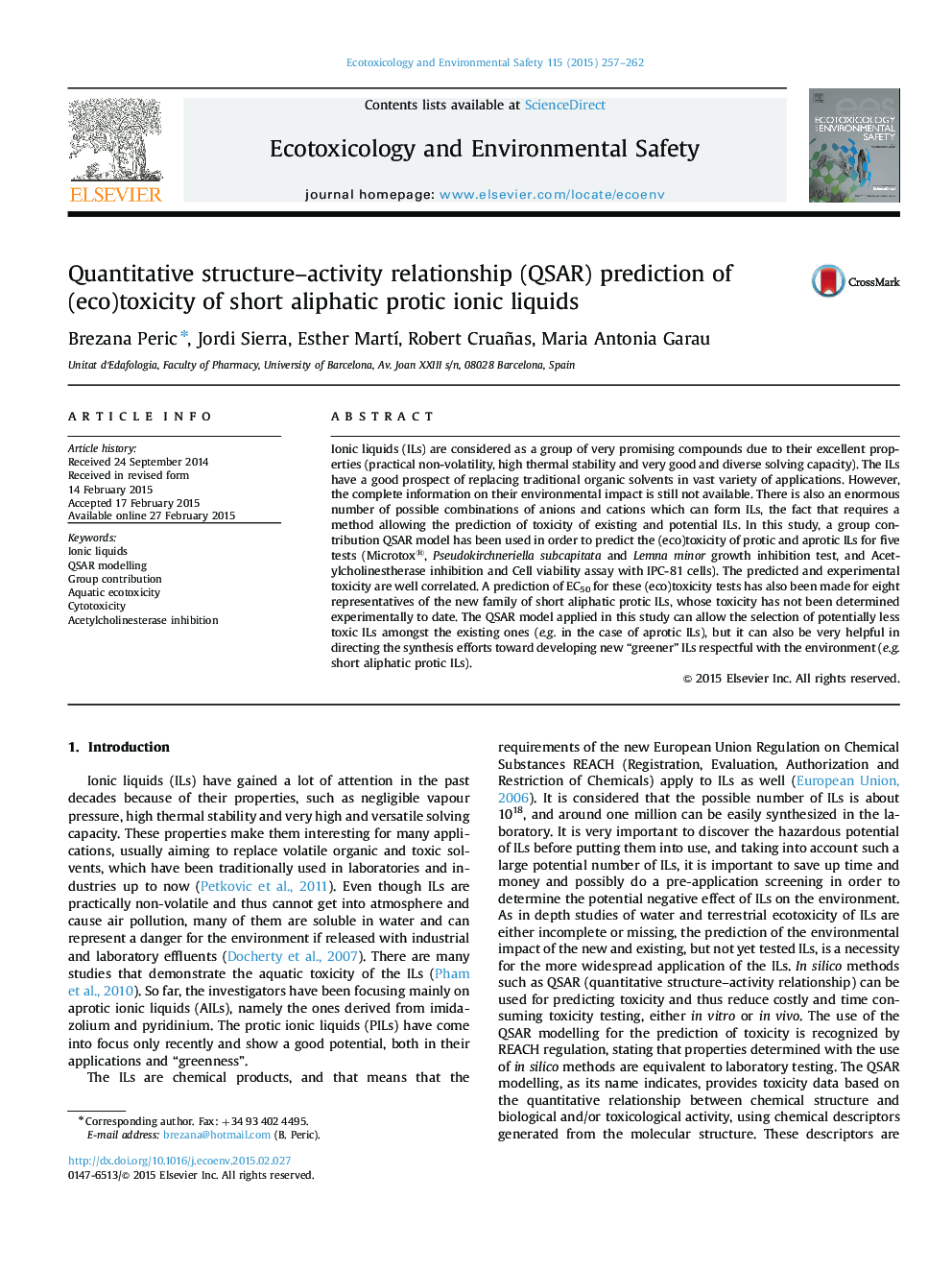| کد مقاله | کد نشریه | سال انتشار | مقاله انگلیسی | نسخه تمام متن |
|---|---|---|---|---|
| 4419742 | 1618948 | 2015 | 6 صفحه PDF | دانلود رایگان |

• Group contribution QSAR model was used to predict EC50 values for ionic liquids (ILs).
• The EC50 values for eight previously untested protic ILs were predicted.
• Cationic part of the molecule of aprotic ILs plays a key role in their toxicity.
• Both cationic and anionic moieties of protic ILs have influence on their toxicity.
Ionic liquids (ILs) are considered as a group of very promising compounds due to their excellent properties (practical non-volatility, high thermal stability and very good and diverse solving capacity). The ILs have a good prospect of replacing traditional organic solvents in vast variety of applications. However, the complete information on their environmental impact is still not available. There is also an enormous number of possible combinations of anions and cations which can form ILs, the fact that requires a method allowing the prediction of toxicity of existing and potential ILs. In this study, a group contribution QSAR model has been used in order to predict the (eco)toxicity of protic and aprotic ILs for five tests (Microtox®, Pseudokirchneriella subcapitata and Lemna minor growth inhibition test, and Acetylcholinestherase inhibition and Cell viability assay with IPC-81 cells). The predicted and experimental toxicity are well correlated. A prediction of EC50 for these (eco)toxicity tests has also been made for eight representatives of the new family of short aliphatic protic ILs, whose toxicity has not been determined experimentally to date. The QSAR model applied in this study can allow the selection of potentially less toxic ILs amongst the existing ones (e.g. in the case of aprotic ILs), but it can also be very helpful in directing the synthesis efforts toward developing new “greener” ILs respectful with the environment (e.g. short aliphatic protic ILs).
Journal: Ecotoxicology and Environmental Safety - Volume 115, May 2015, Pages 257–262